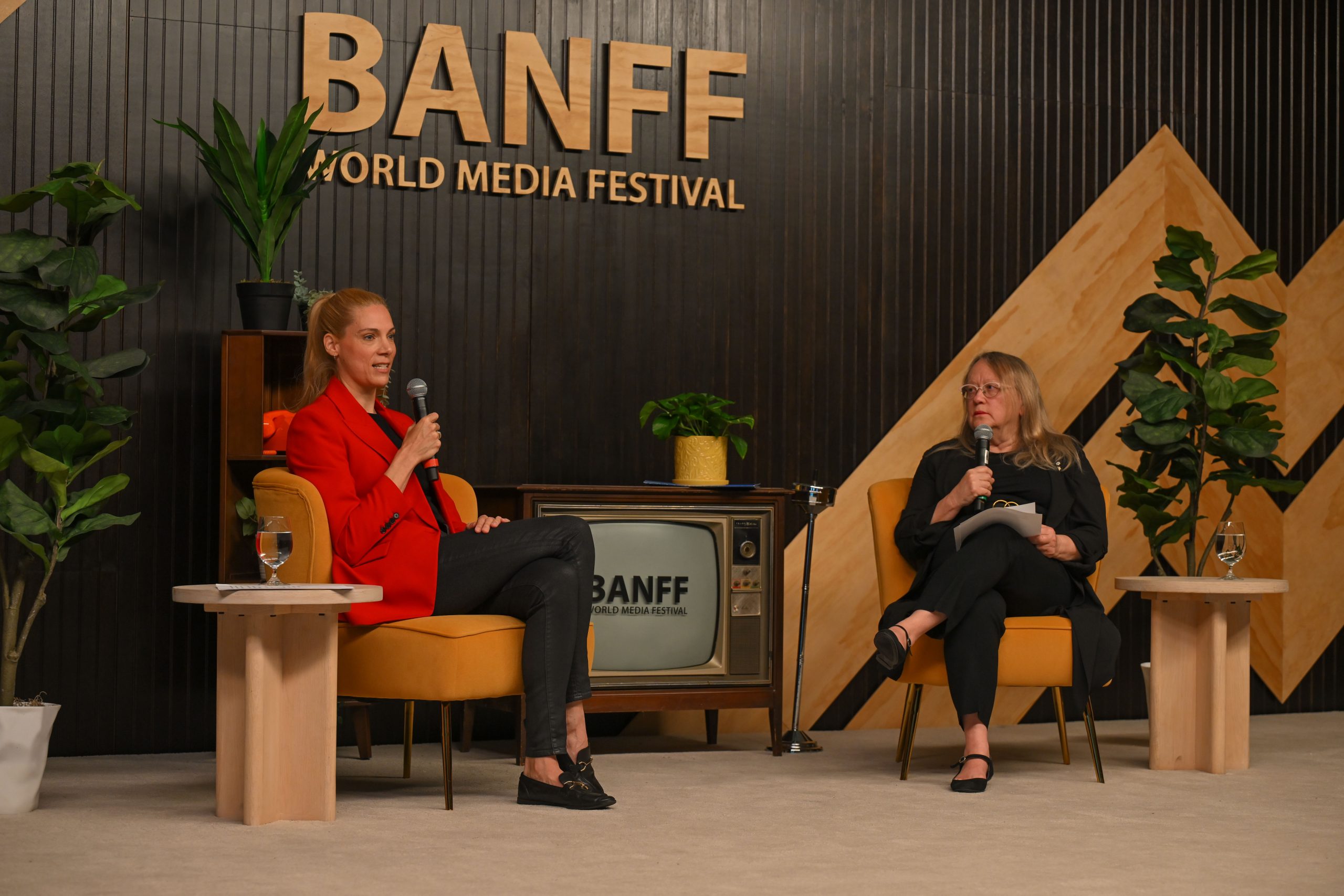Heritage Minister says base contributions are a ‘first step’

BANFF '24: Minister St-Onge spoke with Playback about the next steps to implement Bill C-11 and modernize the sector.
After years of regulatory uncertainty in Canada, the domestic screen sector is finally seeing what the future might look like under the amended Broadcasting Act. But a lot more change is still to come, says Minister of Canadian Heritage Pascale St-Onge (pictured left).
The Minister kicked off the Banff World Media Festival (BANFF) on Sunday (June 9) with a one-on-one conversation with Canada Media Fund (CMF) president and CEO Valerie Creighton (pictured right), where they discussed the Canadian Radio-television and Telecommunications Commission’s (CRTC) decision around base contributions from foreign streamers.
In a nutshell, eligible foreign-owned online undertakings will contribute 5% of their Canadian revenues to a variety of funds, including the CMF and those supporting Indigenous and other equity-deserving communities. The contributions are expected to bring in $200 million to the audiovisual and audio sectors each broadcast year, starting Sept. 1.
BANFF was the first opportunity for St-Onge to meet with the audiovisual sector since the Commission’s decision, and she tells Playback Daily that the industry feedback has been positive overall, though many questions remain.
Among them is how much value will actually be brought into the system. Previously, Canadian Heritage had estimated that the amendments to the Broadcasting Act would bring an additional $1 billion into the Canadian screen sector each year.
While the $200 million estimated by the CRTC falls short of that, St-Onge says the base contributions decision was about levelling the playing field for different parts of the sector.
“This is the first step to create that fair market, but other decisions that will come will have additional impact,” she says, highlighting pending consultations and decisions around the definition of Canadian content, obligations to work with Canadian talent and enabling the promotion and discoverability of Canadian content.
Overall, however, St-Onge says she feels the decision reflects the policy direction issued to the CRTC last November, which included several directives around diversity and inclusion, such as supporting the government’s reconciliation efforts as well as supporting racialized creatives and official language minority communities.
“Making sure that the investments will reflect Canadian diversity is extremely important,” she says.
One of St-Onge’s biggest priorities before the next federal election (coming in fall 2025 at the latest) is to review and modernize CBC/Radio-Canada’s mandate. She says one of the critical goals is to “find a more permanent and stable structure” for the pubcaster as it faces waning private revenues and an increasing need for government funding.
She says another aspect that needs to be strengthened is the volume of trust between CBC/Radio-Canada and the public, and the role the pubcaster plays in delivering news, as the private sector slashes newsroom budgets across the country.
St-Onge adds that supporting Canadian journalism could have a spillover effect on Cancon promotion. “If you don’t have any media to cover the great cultural sector and what we’re doing, it’s harder for the public to know about everything that’s happening in Canada,” she says. “It’s important to have a strong news ecosystem to support the cultural sector.”
Another priority is the overall modernization of the sector. Last year, the government unlocked new authorities for the CMF, which St-Onge says will help remove restrictions on which platforms can receive funding, including digital.
It’s a move she says is happening in tandem with governments across the country to ensure that screen sector investments such as tax credits, grants and funds are complementary on the federal and provincial and territorial levels.
During her conversation with CMF’s Creighton, St-Onge touched on the topic of artificial intelligence (AI), and the need to protect copyright for artists as the technology rapidly advances. Part of the solution, she tells Playback, is to tackle it from a global perspective.
“If we can align on global principles that these [tech] companies should abide by, I think it’s going to be easier to bring in coherent legislation,” she says. “Usually when we talk about trade agreements with other countries, we lift barriers. This is about, on the contrary, protecting what’s important in each of our jurisdictions and in each of our cultural diversity and who we are.”
St-Onge adds that there’s a “sense of urgency to find the right strategies” to place protections around AI, since the potential harms go beyond potential job losses and into invasion of privacy. “I think the companies themselves want clear guidelines as well,” she says.
Photo by Kristian Bogner Photography

 The definitive CDN broadcast and production resource.
The definitive CDN broadcast and production resource.










